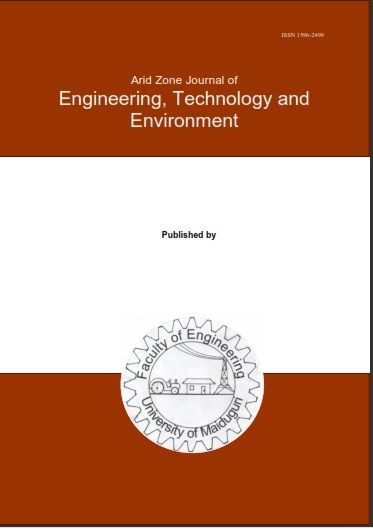Abstract
The new trend of using natural fibers and fillers has greatly improved the formulation of composites. It has been established over the years that natural fibers and fillers have the required characteristics to reinforce polymers. In this study, Palmyra fiber and Balanite shell particles were used to reinforce epoxy C28H3002. Palmyra fiber and Balanite shell particles together formed the reinforcement having equal weight percentage of 50:50. The particle size of the Balanite was 150µm while 90 mm length of the Palmyra fiber was utilized. The compounding ratio of reinforcements to epoxy was 10:90, 20:80, 30:70, 40:60 and 50:50 respectively in order to see the effect of reinforcements loading of the Epoxy on the hybrid composite’s mechanical properties. Palmyra fiber was treated with 5% NaOH solution before compounding in order to improve fiber-particle matrix adhesion. The composite was formulated based on the mixing plan using hand lay-up method which was followed up by a compression molding operation at 2.5 MPa of pressure in order to have good compaction of the composite and further matrix distribution. These formulated composites were named Balanite Palmyra Epoxy (BPE), that is, BPE1, BPE2, BPE3, BPE4 and BPE5 with the numbers describing weight percentage loading of reinforcements of 10, 20, 30, 40 and 50 respectively. Characterization of the composites were done to determine their tensile strength, flexural strength and impact strength. Scanning electron microscopy (SEM) was also carried out in order to know the interaction of the matrix and reinforcements. BPE3 with 30% reinforcement was found to have had the highest tensile strength of 52.99 MPa from 30 MPa of the pure Epoxy, resulting in 44% improvement of the tensile property of the matrix with elongation at break gradually dropping with material loading as a result of reduced flexibility of the matrix resulting from interruptions of its extension by the reinforcements; impact strength of 0.494 J/mm was obtained which gave about 63% improvement of the matrix. BPE2 with 20% reinforcement gave the highest flexural strength of 141.2 MPa and presented an improved flexural property of the matrix by 34%. Tensile modulus increased with reinforcements loading while flexural modulus dropped after 20% loading mainly because of the brittle nature of the matrix. The properties obtained from the hybrid composite make it suitable for low to medium load applications.

This work is licensed under a Creative Commons Attribution-NonCommercial-NoDerivatives 4.0 International License.
Copyright (c) 2025 ARID ZONE JOURNAL OF ENGINEERING, TECHNOLOGY AND ENVIRONMENT

